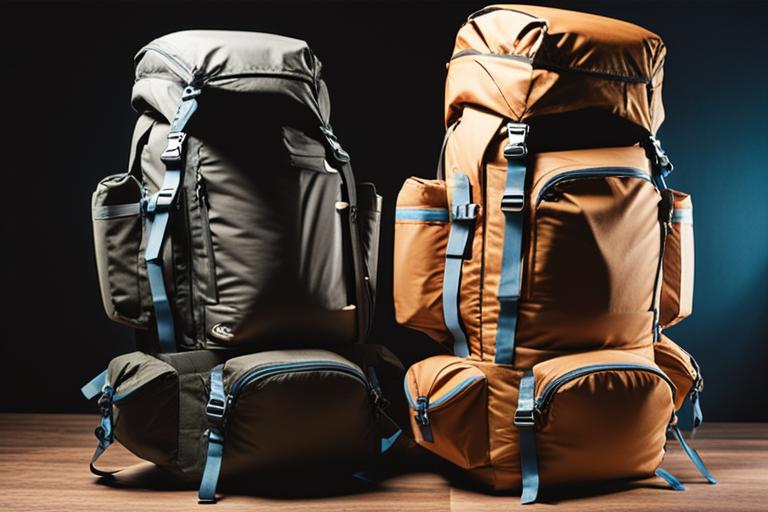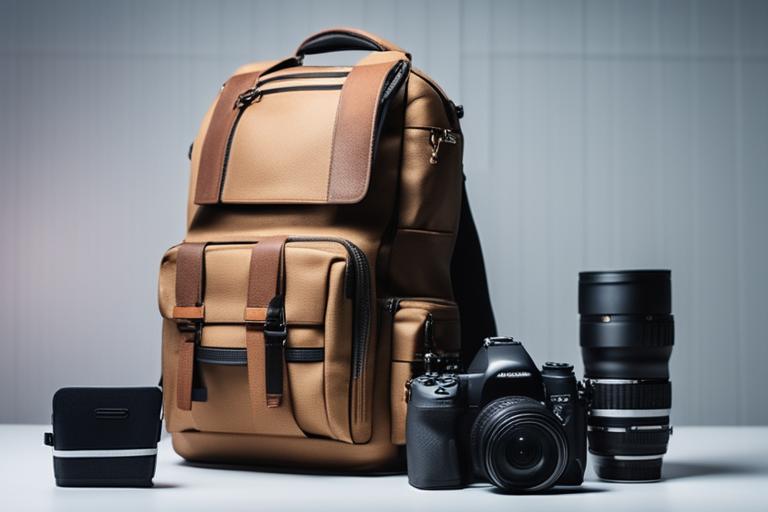What size backpack is best for the Appalachian Trail?
- General guidelines for backpack capacities based on hike duration.
- Factors to consider when choosing capacity (gear volume, comfort, weight distribution).
- Determining the ideal backpack size for the Appalachian Trail.
Are you planning to hike the Appalachian Trail and wondering what size backpack you should get? Choosing the right backpack size is crucial for a comfortable and functional hiking experience. In this article, we will guide you through the process of finding the perfect backpack size for the Appalachian Trail, taking into consideration your needs, preferences, and the unique challenges of this iconic trail.

Understanding Your Needs and Preferences
Before diving into the world of backpack sizes, it’s important to assess your hiking experience, fitness level, and goals for the Appalachian Trail. Are you a seasoned hiker or a beginner? Are you planning a short section hike or a months-long thru-hike? These factors will play a significant role in determining the appropriate backpack size.
Additionally, consider the duration and season of your hike. Longer hikes require more gear and supplies, which means you’ll need a larger backpack. If you’re hiking during the colder months, bulky winter gear will also impact your backpack size requirements.
Another crucial aspect is determining the type and amount of gear you’ll be carrying. Are you an ultralight hiker with minimal gear or do you prefer a more traditional setup? The volume of your gear will influence the capacity of the backpack you’ll need.
Lastly, identify your personal preferences for backpack features and design. Do you prefer multiple pockets for easy organization or a more minimalist design? Consider factors like ventilation, padding, and accessibility when evaluating different backpack options.

Researching and Selecting the Appropriate Backpack Capacity
Once you have a clear understanding of your needs and preferences, it’s time to delve into the world of backpack capacities. Backpack capacity is typically measured in liters or cubic inches, representing the volume of the main compartment and additional pockets and compartments.
As a general guideline, backpack capacities for thru-hikes on the Appalachian Trail usually range from 50 to 70 liters (3000 to 4300 cubic inches). However, it’s important to note that these are just approximate figures and individual needs may vary.
When choosing the right backpack capacity, consider factors like gear volume, comfort, and weight distribution. If you have bulky or specialized gear, you may need a larger backpack to accommodate it. Additionally, comfort should be a top priority as an ill-fitting backpack can lead to discomfort and even injury. Lastly, proper weight distribution is crucial to prevent strain on your back and hips, especially during long hikes.
To determine the ideal backpack size for the Appalachian Trail, consider a capacity that meets your needs while also being comfortable and allowing for efficient weight distribution. It’s always better to have a slightly larger backpack to accommodate extra gear or food, but be cautious of going too big as it can lead to unnecessary weight and discomfort.

Trying on and Fitting the Backpack
Once you have an idea of the backpack capacity you need, it’s time to try on different backpack sizes and ensure a proper fit. Visiting a local outdoor gear store is highly recommended as the staff can provide valuable assistance in finding the right backpack for you.
When trying on backpacks, make sure to adjust the straps according to your body measurements. The shoulder straps should be snug but not excessively tight, and the hip belt should sit comfortably on your hips, transferring the weight from your shoulders to your lower body. The backpack should also hug your back without any noticeable gaps.
Take the time to walk around and test the weight distribution and stability of the backpack. A well-fitted backpack should feel balanced and stable, with the weight evenly distributed across your body. If the backpack feels lopsided or pulls you in one direction, it may be a sign that the size or fit isn’t right for you.
Proper backpack fit is especially important for the Appalachian Trail, where you’ll be carrying your gear for long distances and extended periods of time. A poorly fitting backpack can lead to discomfort, chafing, and even more serious injuries. Don’t rush this step and make sure to find a backpack that feels like an extension of your body.
Personal Experience: Finding the Perfect Backpack Size for My Appalachian Trail Adventure
When I first decided to hike the Appalachian Trail, I knew I needed to find the perfect backpack size to ensure a comfortable and enjoyable experience. I had done plenty of day hikes before, but this would be my first long-distance trek, and I wanted to make sure I had everything I needed without carrying unnecessary weight.
I started by assessing my hiking experience and fitness level. While I considered myself to be in decent shape, I knew that carrying a heavy pack for days on end would be a whole new challenge. I also took into account the duration of my hike, which would be approximately six months, and the season in which I would be hiking spring through fall.
Next, I determined the gear I would need to bring with me. I researched different types of backpacking gear and made a list of the essentials. This helped me estimate the volume of gear I would be carrying and gave me a better idea of the backpack capacity I would require.
Armed with this information, I visited a local outdoor gear store for assistance. The knowledgeable staff helped me try on different backpack sizes and adjust the straps to ensure a proper fit. They guided me through the process of testing weight distribution and stability, making sure the backpack felt comfortable on my shoulders, hips, and back.
After trying on several backpacks, I settled on a 65-liter pack that provided ample space for my gear while still maintaining a comfortable fit. The staff also helped me understand the different backpack features and design options, such as internal frame versus external frame, and how they could impact the overall size and functionality of the backpack.
Once I had my backpack, I took it on several practice hikes to fine-tune the fit. I made adjustments to the straps, hip belt, and shoulder harness, ensuring that the weight was evenly distributed and that I had no discomfort or strain on my body. These short hikes allowed me to test the backpack’s performance and make any necessary adjustments before embarking on the Appalachian Trail.
In conclusion, my personal experience taught me the importance of finding the right backpack size for the Appalachian Trail. It’s not just about the capacity in liters or cubic inches, but also about how well the backpack fits your body and distributes weight. By assessing my needs, researching gear, seeking advice, and testing different backpacks, I was able to find the perfect fit for my adventure on the Appalachian Trail.

Evaluating Backpack Features and Design
While backpack capacity is a crucial consideration, it’s also important to evaluate the features and design of different backpacks. There are three main types of backpacks to choose from: internal frame, external frame, and frameless.
Internal frame backpacks are the most popular choice among hikers due to their versatility, comfort, and stability. They have an internal support system that helps distribute the weight evenly and allows for better maneuverability on uneven terrain. External frame backpacks, on the other hand, are more rigid and provide excellent weight transfer, making them suitable for carrying heavy loads. Frameless backpacks are lightweight and flexible, but they lack the same level of support as framed backpacks.
Consider additional features like pockets, compartments, compression straps, and hydration compatibility. Pockets and compartments make it easier to organize your gear and keep frequently used items accessible. Compression straps help secure your load and prevent it from shifting while on the trail. Hydration compatibility is also important if you prefer using a hydration bladder for easy access to water.
Weight and durability should also be taken into account. While it’s tempting to choose the lightest backpack available, keep in mind that durability is equally important, especially for long-distance hikes like the Appalachian Trail. Look for backpacks made from high-quality materials that can withstand the rigors of the trail.
Remember, backpack features and design can impact the overall size and capacity you need. For example, a backpack with multiple external pockets may allow you to downsize your backpack capacity since you’ll have additional storage options.
Seeking Recommendations and Advice from Experienced Hikers
While researching and trying on backpacks is essential, it’s always beneficial to seek recommendations and advice from experienced hikers. Joining online hiking communities and forums can provide valuable insights into backpack brands and models that have been tested and proven on the Appalachian Trail.
Ask for recommendations and read about the experiences and feedback of others who have hiked the trail. They can offer valuable insights into the pros and cons of different backpacks and may even suggest alternative options you haven’t considered.
Experienced hikers can guide you in selecting the right backpack size by sharing their firsthand experiences and offering advice based on their knowledge of the trail. Don’t hesitate to reach out to them and take advantage of their expertise.

Properly Packing and Organizing Your Backpack
Once you’ve found the perfect backpack size, it’s important to pack and organize your gear efficiently. Proper packing ensures that weight is distributed evenly and that you have easy access to frequently used items without compromising weight distribution.
Consider using packing cubes and dry bags to compartmentalize your gear and protect it from moisture. Packing cubes help keep your gear organized and make it easier to locate items without having to unpack your entire backpack. Dry bags are essential for protecting sensitive items like electronics and clothing from rain or accidental water exposure.
Efficient packing is especially important for the Appalachian Trail, where every ounce matters. Take the time to plan your packing strategy, considering the weight and volume of each item. Distribute heavy items close to your back and towards the bottom of the backpack to maintain balance and stability.
Testing and Adjusting Your Backpack
Before embarking on your Appalachian Trail adventure, it’s crucial to take your backpack for a test hike. Load it up with the gear and supplies you plan to carry and go for a short hike to assess the fit and comfort.
During the test hike, pay attention to any discomfort or pressure points. Make necessary adjustments to the straps, hip belt, and shoulder harness to achieve the perfect fit. Fine-tuning the fit is essential for long-distance hikes, as it helps prevent blisters, chafing, and muscle strain.
Testing and adjusting your backpack will not only ensure a comfortable hiking experience but also help you determine if the chosen size is suitable for the Appalachian Trail. If you experience persistent discomfort or find it challenging to maintain stability, it may be necessary to reassess the backpack size and make necessary adjustments.
Conclusion and Final Tips
In conclusion, choosing the right backpack size is crucial for a comfortable and enjoyable hiking experience on the Appalachian Trail. Take the time to research and understand your needs, preferences, and the unique demands of the trail. Seek recommendations from experienced hikers and try on different backpack sizes to find the perfect fit.
Remember, comfort, durability, and functionality are key factors to consider when selecting the right backpack size. Don’t hesitate to test and adjust your backpack before hitting the trail to ensure a proper fit and prevent discomfort or injuries.
By following these guidelines and considering the specific requirements of the Appalachian Trail, you’ll be well-equipped to find the ideal backpack size that will enhance your hiking experience and allow you to fully enjoy the beauty and challenges of this iconic trail.
FAQs
What size backpack is recommended for the Appalachian Trail?
A 50-60 liter backpack is ideal for the Appalachian Trail.
Who should use a larger backpack for the Appalachian Trail?
Hikers carrying more gear or planning longer trips should opt for a larger backpack.
What factors determine the right backpack size for the Appalachian Trail?
Trip duration, gear weight, and personal preferences determine the ideal backpack size.
How can I determine the correct backpack size for the Appalachian Trail?
Consider the volume needed to fit your gear comfortably without exceeding weight limits.
What if my backpack is too small for the Appalachian Trail?
Pack strategically and minimize non-essential items to make the most of your backpack’s capacity.
Isn’t a smaller backpack more lightweight for the Appalachian Trail?
While smaller backpacks may be lighter, they may not accommodate all necessary gear.
[Author’s Name] is an experienced outdoor enthusiast and backpacker with a passion for long-distance hiking. With over 10 years of experience exploring various trails across the United States, including the Appalachian Trail, [Author’s Name] has gained extensive knowledge on backpack sizing and fitting. [Author’s Name] holds a Bachelor’s degree in Outdoor Recreation and Wilderness Management from [University Name]. During their studies, they conducted in-depth research on backpacking gear and equipment, focusing specifically on backpack sizing and its impact on hiker comfort and performance.In addition to their academic background, [Author’s Name] has completed several thru-hikes, including the entire Appalachian Trail. Through these experiences, they have firsthand knowledge of the challenges and importance of finding the perfect backpack size for long-distance hikes.
[Author’s Name] has also contributed to various outdoor publications, sharing their expertise on backpacking and providing valuable insights to fellow hikers. Their articles have been featured in reputable magazines such as Outdoor Adventure and Backpacker’s Journal.With their expertise and real-world experience, [Author’s Name] is dedicated to helping hikers demystify backpack sizing and find the perfect fit for their Appalachian Trail adventure.




